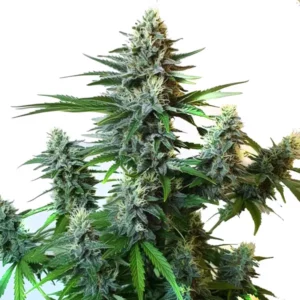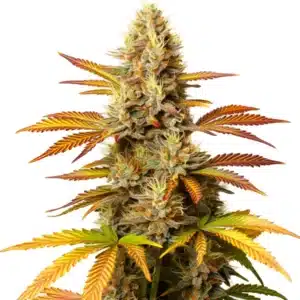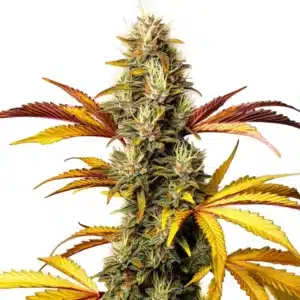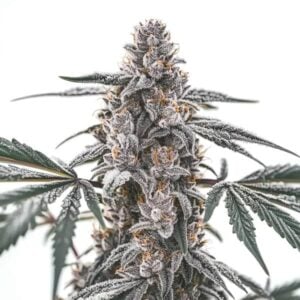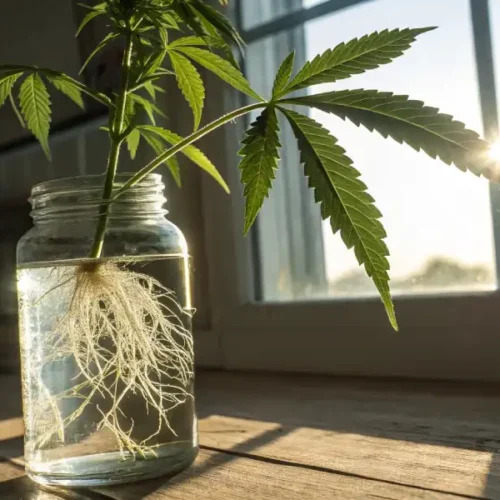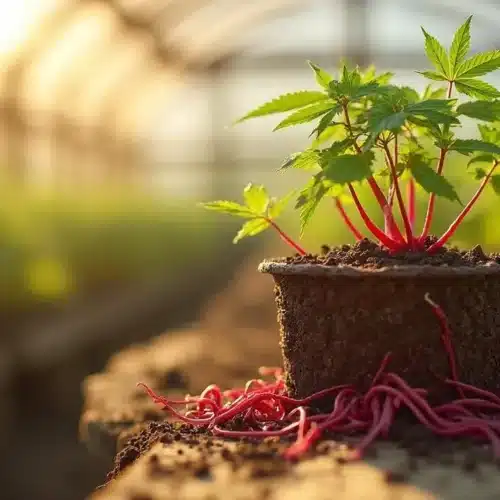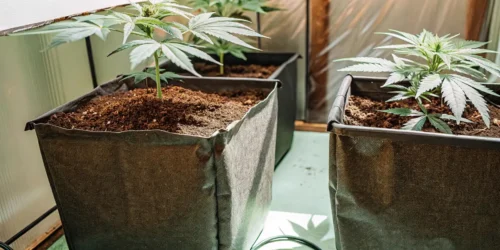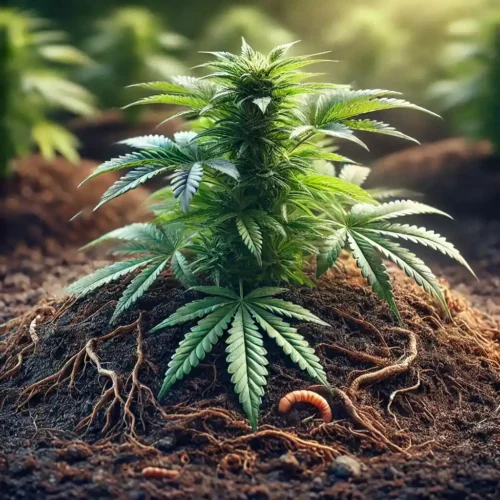Soil is crucial for the flourishing of cannabis plants, serving as a stable medium for growth while storing water and nutrients. Choosing the best soil for cannabis seedlings is essential, as it provides the right balance of nutrients and structure to support healthy early development. Soil nutrients fall into primary, secondary, and micronutrient categories, all of which play vital roles in plant growth.
Optimal growth and yield in cannabis necessitate 18 key nutrients, their availability influenced by soil pH. Maintaining a slightly acidic pH between 5.8 and 6.3 is preferred by cannabis plants. Deviations from this range can hinder nutrient absorption, resulting in diminished growth and yield.
Recommended Strains
24k Gold
 THC: 19% - 22%
THC: 19% - 22% Type of seed: Feminized
Type of seed: Feminized Phenotype: Mostly Indica
Phenotype: Mostly Indica Day to flower: 8 - 10 weeks
Day to flower: 8 - 10 weeks
24k Gold Autoflower
 THC: 18% - 24%
THC: 18% - 24% Type of seed: Autoflowering
Type of seed: Autoflowering Phenotype: Mostly Sativa
Phenotype: Mostly Sativa Day to flower: 8 - 10 weeks
Day to flower: 8 - 10 weeks
In the following guide we are going to delve into these key concepts for cannabis cultivation. Remember that good soil makes plants stronger, larger, and more productive, which is why at Blimburn Seeds we take care to teach you this content, so that you always use the best cannabis soil in your crops to obtain heavy harvests with incredible flowers.
Difference Between Soil and Potting Mix for Container Gardening
In the world of gardening, understanding the distinction between soil and potting mix is essential for successful container gardening. When selecting the best soil for cannabis seedlings, it’s important to recognize that soil and potting mix serve as the foundation for healthy plant growth, but they differ significantly in composition and purpose.
Soil:
Soil, the natural layer covering the earth’s surface, comprises a blend of minerals, organic matter, water, air, and microorganisms. Its characteristics, such as texture, pH level, and nutrient content, vary based on location and composition. Soil is primarily found outdoors and contains mineral particles resulting from rock breakdown, influencing its texture, water retention, and drainage capabilities.
Potting Mix:
On the contrary, potting mix is a manufactured growing medium tailored explicitly for container gardening. Crafted from a mix of organic materials like peat moss, composted bark, and coconut coir, along with additives like perlite or rice hulls, potting mix is designed to be lightweight and well-draining. This unique blend provides container-grown plants with an optimal balance of nutrients and moisture, crucial for their health and growth.
Key Differences:
One of the primary distinctions between soil and potting mix lies in their density and weight. Soil tends to be heavier and denser due to its natural composition, whereas potting mix is lighter and fluffier, ideal for container gardening. For growers looking for the best soil for cannabis seedlings, selecting a light, nutrient-rich mix is essential to promote healthy germination and seedling growth. While soil relies on minerals from rock particles, potting mix incorporates organic matter and additives to create an environment conducive to container plant growth.
These differences empowers gardeners to choose the right growing medium for their container plants, ensuring optimal conditions for thriving greenery. Whether it’s the natural richness of soil or the tailored blend of potting mix, selecting the appropriate medium is crucial for nurturing flourishing container gardens.
Promos & Deals
What is the best pro mix soil for cannabis?
Discover how soil texture influences the growth of cannabis plants. Soil texture comes in various forms: clay, sand, silt, and loam – a blend of all three. Each type has distinct traits shaping plant development.
Sandy soil: With its large particles, offers easy manipulation and rapid drainage. However, it poses challenges as essential nutrients like Nitrogen can leach away swiftly.
Silt soil: featuring medium-sized particles, excels in moisture retention.
Clay soil: with its dense composition, struggles with water penetration when compacted. Yet, it boasts the highest cation exchange capacity (CEC) among soil textures.
Loam soil: a harmonious mix of sand, silt, and clay, emerges as the prime choice for cannabis cultivation. It strikes a balance, providing adequate drainage, moisture retention, and workability.
The organic fraction within soil, rich in Carbon and Nitrogen, acts as a nutrient reservoir. Comprising living organisms, decomposing matter, and animal residues, it fosters microbial activity, culminating in humus formation.
Humus: akin to nature’s compost, facilitates nutrient cycling through its chelating properties. This organic compound fosters the breakdown of minerals, rendering them readily available to plants.
Elevating soil organic matter enhances all soil types, achievable through cover crops, manures, and compost. While potting mix primarily relies on the organic fraction, it lacks the mineral diversity found in soil.
Optimizing soil texture is key to activating the full potential of cannabis cultivation.
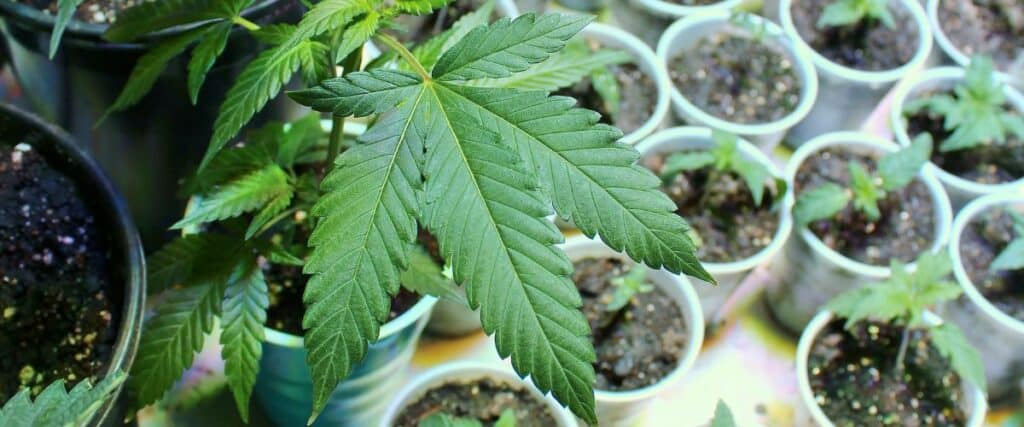
How do you make soil more nutrient rich?
Soil transcends its humble appearance as mere dirt; it’s a bustling ecosystem, teeming with life and interconnected organisms, all intricately woven together through nutrient cycles and energy exchanges. For growers, selecting the best soil for cannabis seedlings is essential to support this dynamic environment. Within every teaspoon of soil, a vibrant community thrives, comprising billions of microorganisms—bacteria, fungi, nematodes, insects, and earthworms—each fulfilling crucial roles in the soil’s vitality.
Bacteria and fungi diligently break down deceased plant and animal matter, transforming them into vital nutrients for plant growth. Meanwhile, nematodes consume plant materials and other organisms, liberating essential nutrients through their waste. Enter the specialized mycorrhizal fungi, forging symbiotic alliances with plants. These fungi act as conduits, delivering elusive nutrients and water directly to plant roots, while receiving carbohydrates in return.
In the depths of the soil, worms and insects tirelessly shred and munch organic matter into more manageable pieces, facilitating access for bacteria and fungi to further decompose. Garden earthworms, though beneficial, can disrupt ecosystems if introduced into non-native habitats like Minnesota’s forests. To curb their spread, it’s crucial not to dispose of fishing bait containing earthworms or transport soil housing them.
A thriving soil ecosystem is essential for fostering optimal conditions for plant growth, ensuring easy access to air, water, and essential nutrients. Here are six actionable tips to enhance soil health in your garden:
Test Your Soil
Discovering the secrets of your soil is the initial stride towards nurturing an ideal soil environment. Send a sample of your garden soil to the University of Minnesota Soil Testing Lab, situated on the St. Paul campus. Upon analysis, your soil test outcomes will unveil valuable insights regarding its texture, pH levels, nutrient composition, and organic content. Moreover, tailored fertilizer recommendations will be provided based on the specific plants you intend to cultivate.
Enhance Soil Quality with Organic Matter
Organic matter comprises a blend of living plant roots, decomposing plant and animal residues at various stages, and enzymes discharged by soil organisms, effectively binding soil particles together like natural glue. For growers seeking the best soil for cannabis seedlings, rich organic matter is key, as it enhances nutrient availability and promotes healthy root development. As fungi and bacteria break down organic matter, nutrients are released, fostering a symbiotic relationship with plants. This process ensures a steady supply of essential nutrients, fostering robust plant growth.
Humus, the highly decomposed form of organic matter, serves as a stable reservoir of nutrients vital for plant development, contributing significantly to soil fertility. Cultivate Nutrient-Rich Soil Just like humans, plants require a diverse array of nutrients to thrive optimally. Among the 17 essential nutrients, some are needed in larger quantities (macronutrients), while others are required in trace amounts (micronutrients).
While elements like carbon, oxygen, and hydrogen are sourced from the air and water, macronutrients such as nitrogen, phosphorus, and potassium can be supplemented through fertilizers and organic matter. Additionally, micronutrients like iron, manganese, and zinc, although needed in smaller amounts, play crucial roles in plant health. A comprehensive soil test will pinpoint any deficiencies in your soil’s nutrient profile, guiding you on the path to enriching it with the necessary supplements. Incorporating organic materials like compost can serve as a holistic solution, providing a source of both macronutrients and micronutrients essential for vigorous plant growth.
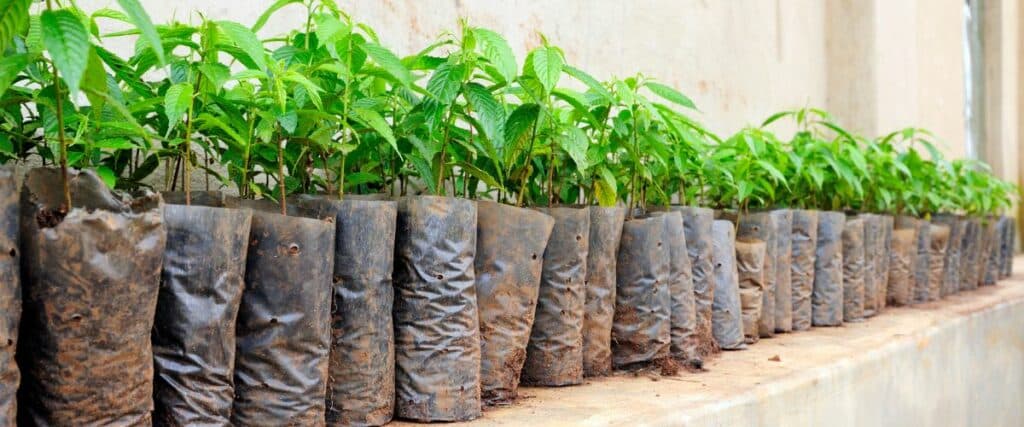
Soil With Good Aeration And Hydration
Ensuring optimal growth for plant roots and microbes requires access to varying levels of air and water, which are found in the diverse microenvironments within soil. Using the best soil for cannabis seedlings helps maintain these balanced conditions, promoting strong root development and microbial activity. However, activities like soil compaction and excessive tillage can disrupt these vital habitats, making it challenging for roots to thrive and for beneficial microbes to flourish.
Moreover, soil disturbance can exacerbate weed issues by exposing dormant seeds to light, leading to increased germination and more weeds sprouting up. To counteract these problems and create an ideal growing space, here are some tips:
- Utilize designated walking paths in planting areas to prevent soil compaction around plant roots. Consider options like raised beds, narrow beds no wider than 4 feet for easy access, or freestanding beds with accessibility from all sides.
- Minimize or avoid tilling by opting for hand tools when preparing garden beds. This helps preserve soil structure and the integrity of microenvironments.
- Enhance compacted soil with compost to boost air, water, and nutrient levels for plants. For flowers and vegetables, incorporate 1 to 2 inches of compost at a depth of 6 to 8 inches. When planting trees and shrubs, mix in 4 inches of compost at a depth of 12 inches for optimal results.
By following these practices, you can promote healthier soil, improve plant growth, and reduce weed proliferation in your garden.
Secrets of Soil Health: Tips to Protect and Nourish Your Garden
Did you know? The surface layers of soil are teeming with life! Within just a few inches, you’ll find a bustling community of microorganisms, vital organic matter, and essential soil nutrients. But here’s the catch: this precious topsoil is vulnerable to erosion. Luckily, there are simple strategies you can employ to safeguard it and keep your garden thriving.
Mulching or planting cover crops is like giving your soil a cozy blanket. Not only does it shield against erosion, but as these materials break down, they enrich the soil with valuable organic matter. Ever seen raindrops hit bare soil? They can catapult tiny soil particles high into the air! Yikes! By mulching around your plants, you create a barrier that stops this soil-splash, reducing the risk of diseases spreading to your precious foliage.
But wait, there’s more! Mulch and cover crops are like superheroes for your garden, conserving moisture, choking out pesky weeds, and even keeping soil temperatures in check to ease plant stress. Choosing the best soil for cannabis seedlings is also essential, as healthy soil supports robust growth and strong root development. And when it comes to pest control, think twice before reaching for chemicals. Sure, they zap bugs, but they can also harm the good guys – the beneficial microbes and insects living in your soil.
Before resorting to chemicals, explore your options. From gentle insecticidal soaps to natural remedies like spinosad or Bt, there are plenty of low-impact solutions to consider. Plus, choosing disease-resistant plant varieties and employing physical barriers can go a long way in protecting your garden oasis. Remember, not all plant problems are life-threatening. With a little detective work using tools like our “What’s Wrong with My Plant?” guide, you can identify and tackle issues head-on, ensuring your garden stays healthy and vibrant.
Creating the Best Cannabis Potting Mix
Are you looking to cultivate the healthiest cannabis plants? It all starts with the soil. The ideal soil needs to tick several boxes: optimal aeration, proper drainage, diverse microbial life, balanced nutrient ratios, and a high CEC (cation exchange capacity).
Ensuring proper oxygen circulation around the roots while retaining moisture is crucial for your plant’s well-being. You want a soil teeming with various microorganisms and nutrients in just the right proportions. Additionally, a high CEC means your plant can access nutrients more efficiently.
While many pre-packaged potting mixes meet these criteria, crafting your own can be both enjoyable and cost-effective. Not to mention, it allows you to tailor the mix to your plant’s specific needs.
Here’s a simple recipe to get you started:
● 1/3 Sphagnum Peat Moss and/or Coco Coir.
● 1/3 Aeration (Consider Rice Hulls*, Pumice, Vermiculite, or Perlite).
● 1/3 Compost.
● Add 5-10% of the total volume as Biochar**.
Feel free to customize further with additional amendments like Neem Meal, Glacial Rock Dust, Soft Rock Phosphate, Crustacean Meal, or Kelp Meal.
Rice hulls stand out as a sustainable choice for aeration.
Biochar not only boosts CEC but also provides a habitat for beneficial microbes.
Crafting your own potting mix not only saves you money but also ensures your cannabis plants get the tailored care they deserve. Start experimenting today and watch your plants thrive like never before!

FAQs about best soil for cannabis seedlings
What pH should soil be for cannabis seedlings?
The ideal pH range for fostering cannabis growth lies between 6.0 and 7.0, making it crucial to maintain pH levels within this spectrum. Initially, employ a pH meter to extract a soil sample from the cultivation space. Blend a small portion of soil with an equal quantity of water to produce a soil suspension.
Is potting soil good for cannabis seedlings?
There are several varieties of soil used in growing cannabis, with potting soil and living soil being the most common. Potting soil sold at any gardening store is preferred due to its low cost, although it generally does not produce equivalent results compared to live soil. On the other hand, are the growers, who occupy the generic land for plants.
These growers usually have cultivation problems due to soil pH imbalance or also because the soil becomes compacted and makes it impossible to irrigate correctly. In addition, there are other important factors why the generic soil normally sold in gardening stores is not recommended. On the contrary, at Blimburn seeds, we recommend using a substrate made for growing cannabis and thus obtain the best crops, without major problems.
What nutrients are in soil for cannabis?
Cannabis cultivation requires three crucial components: nitrogen, phosphorus, and potassium. These vital nutrients, commonly referred to as “macronutrients,” are generally found in abundance in both soil and fertilizer solutions. Additionally, cannabis plants require secondary minerals such as calcium, magnesium, and sulfur for optimal growth and development.
What is the best NPK for cannabis soil?
An ideal NPK ratio of 3:1:1 is typically advantageous for cannabis plants during this stage of their growth cycle, guaranteeing ample nitrogen supply while maintaining a moderate level of the other essential nutrients. Quality soils commonly provide abundant nitrogen content.



